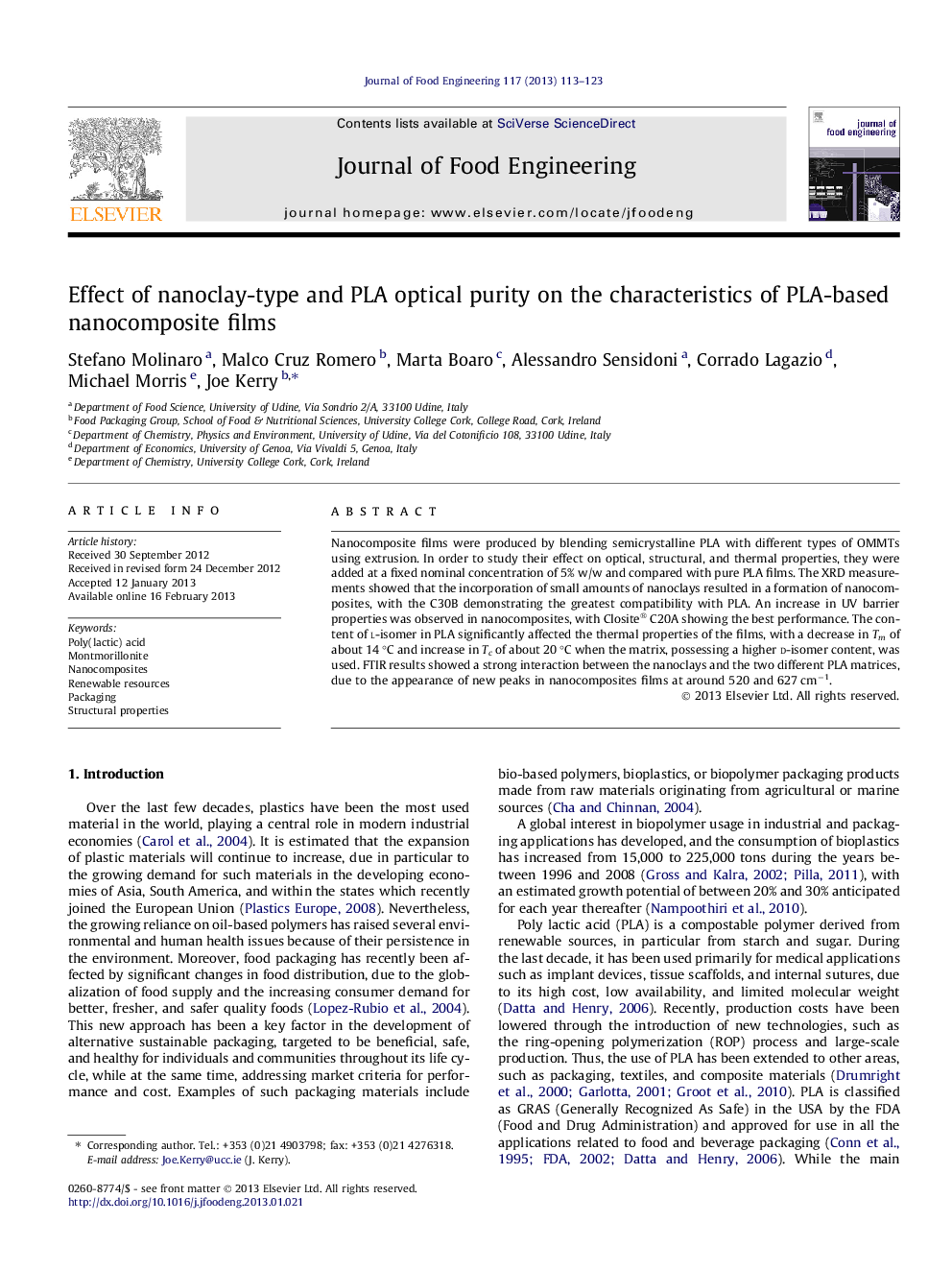| Article ID | Journal | Published Year | Pages | File Type |
|---|---|---|---|---|
| 223539 | Journal of Food Engineering | 2013 | 11 Pages |
Nanocomposite films were produced by blending semicrystalline PLA with different types of OMMTs using extrusion. In order to study their effect on optical, structural, and thermal properties, they were added at a fixed nominal concentration of 5% w/w and compared with pure PLA films. The XRD measurements showed that the incorporation of small amounts of nanoclays resulted in a formation of nanocomposites, with the C30B demonstrating the greatest compatibility with PLA. An increase in UV barrier properties was observed in nanocomposites, with Closite® C20A showing the best performance. The content of L-isomer in PLA significantly affected the thermal properties of the films, with a decrease in Tm of about 14 °C and increase in Tc of about 20 °C when the matrix, possessing a higher D-isomer content, was used. FTIR results showed a strong interaction between the nanoclays and the two different PLA matrices, due to the appearance of new peaks in nanocomposites films at around 520 and 627 cm−1.
► Incorporation of nanoclays in PLA formed nanocomposites with intercalated structures. ► Addition of nanoclays in PLA matrix increased barrier properties to UV radiation. ► Thermal properties were slightly affected by the addition of nanoclays. ► Incorporation of nanoclays had weak effects on the decomposition process of PLA. ► Barrier properties were highly improved by addition of nanoclays.
